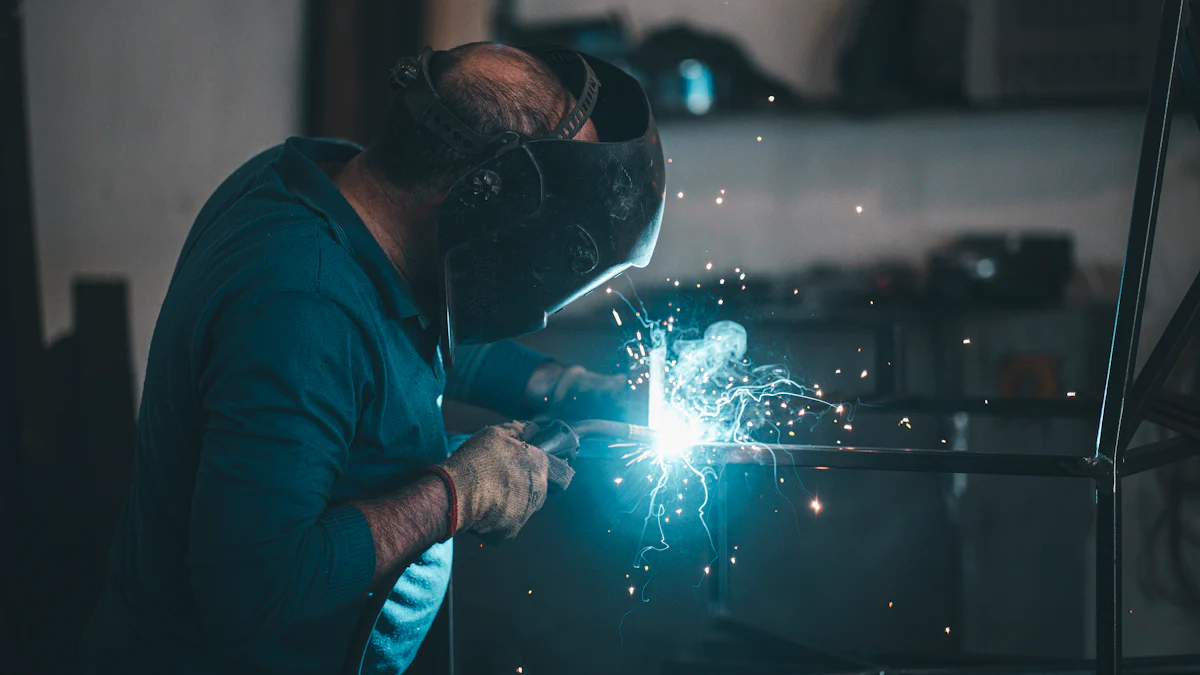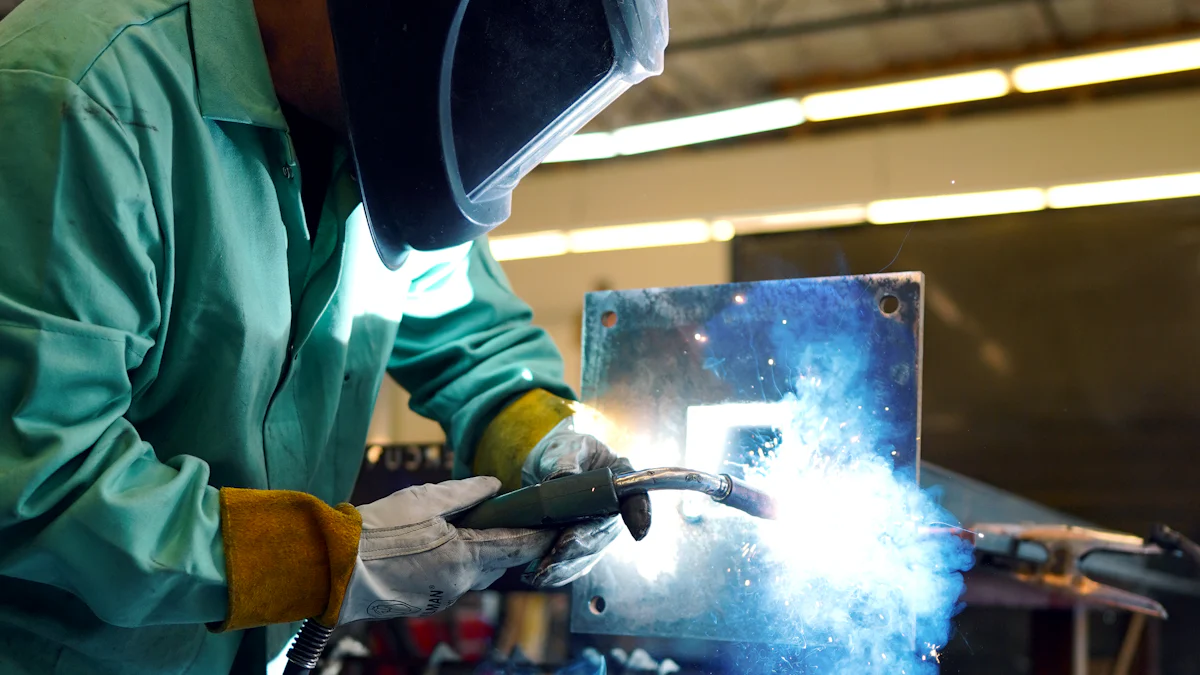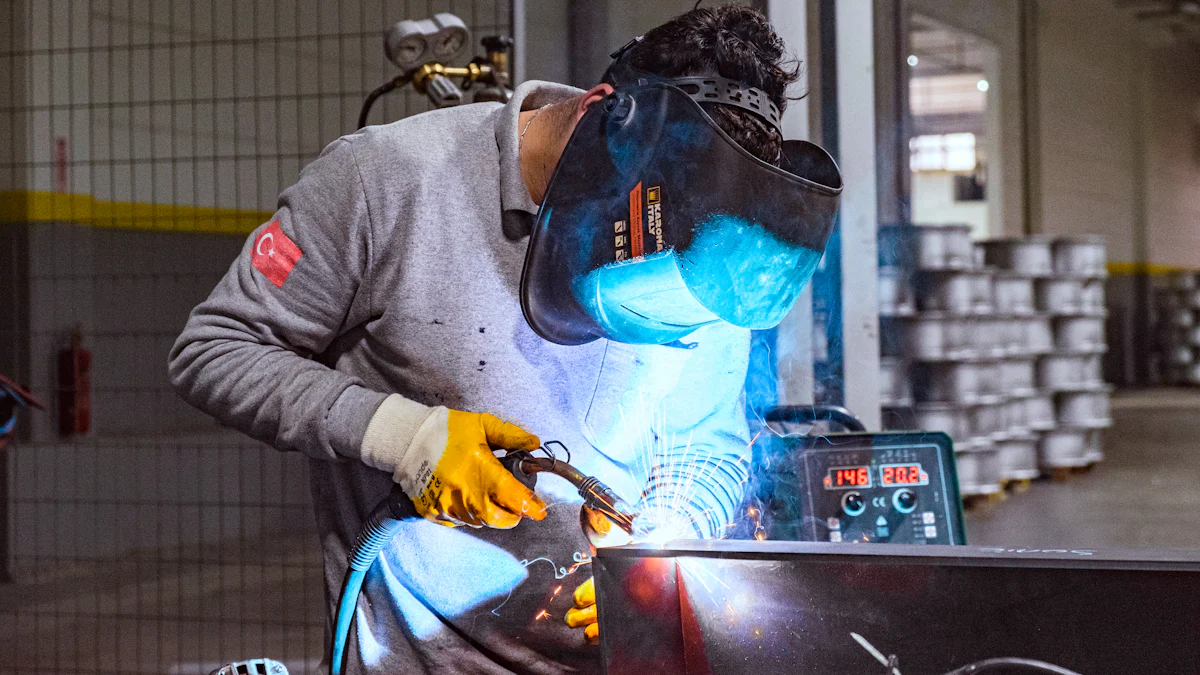
News
Welding preheating often faces challenges like inefficiency, uneven heating, and safety risks. Traditional methods, such as flame and resistance heating, waste energy and create inconsistent results. An induction heating machine solves these issues by delivering over 90% efficiency and precise, uniform heating. This advanced technology minimizes heat loss, reduces operator fatigue, and ensures safer operations.
Key Takeaways
Induction heating machines are over 90% energy efficient. They lower costs and waste compared to older methods.
This method heats evenly, improving weld strength and reducing weak spots.
Induction heating is safer since it has no open flames. It also reduces worker tiredness, making it better for preheating.
Challenges in Traditional Welding Preheating

Inefficiency and High Energy Consumption
Traditional welding preheating methods often waste energy and time. Flame heating, for example, heats the surrounding air instead of focusing on the weld area. This inefficiency increases fuel costs and slows down the process. Resistance heating, on the other hand, requires lengthy setup and teardown times. You might spend up to three hours preparing a single weld joint, only to wait even longer for the equipment to cool down. These delays not only raise labor costs but also reduce overall productivity.
In contrast, induction heating offers high efficiency by converting most electrical energy directly into heat. This method minimizes energy loss and can even lead to financial rebates from utility companies. By switching to induction heating, you can achieve faster preheating and significantly lower energy costs.
Uneven Heating Leading to Quality Issues
Uneven heating is a common challenge in traditional methods. Resistance heating often creates cold or hot spots due to pad failures or uneven outputs. If a heater pad burns out, other pads may overcompensate, causing further inconsistencies. Flame heating also struggles with uniformity. Factors like fuel consumption, flame manipulation, and distance from the weldment can result in uneven temperatures.
These inconsistencies compromise weld quality. Cold spots may lead to weak joints, while overheating can damage the material. Induction heating eliminates this issue by generating heat directly within the workpiece. This ensures uniform temperature distribution, preserving the integrity of the weld and reducing the need for constant monitoring.
Safety Risks and Operator Fatigue
Traditional preheating methods pose significant safety risks. Resistance heating can expose you to burn hazards from hot ceramic pads or shock hazards from broken wires. Flame heating introduces even greater dangers, including burns, fires, and explosions caused by open flames and toxic gas byproducts. Storing explosive gases like propane adds another layer of risk.
Induction heating addresses these challenges by eliminating open flames and hot external surfaces. This technology enhances safety while reducing operator fatigue. Its efficient design requires less manual intervention, allowing you to focus on the task without unnecessary strain.
The Role of Induction Heating Machines

How Induction Heating Works
Induction heating relies on electromagnetic principles to generate heat directly within a material. Unlike traditional methods, it uses a magnetic field to heat conductive materials without physical contact. This process is based on Faraday’s law, where a changing magnetic field induces an electric current (eddy current) in the material. These currents, combined with the skin effect, concentrate heat near the surface for rapid heating.
This induction heating process ensures faster and more efficient heating compared to flame or resistance methods, making it ideal for industrial applications requiring precision.
Precision and Uniform Heating with Induction Heating Technology
Induction heating technology excels in delivering precise and uniform heating. It allows you to control the temperature with high accuracy, ensuring consistent results. Unlike traditional methods, which often create uneven heating, induction heating eliminates temperature gradients. This uniformity enhances the quality of welds and reduces the risk of material damage.
By using induction heating machines, you can achieve superior quality and reproducibility in your welding projects.
Energy Efficiency and Faster Preheating
Induction heating machines deliver unmatched efficiency improvement by converting up to 90% of the energy into usable heat. This high power density ensures rapid heating, reducing preheating times significantly. Unlike traditional methods, which waste energy by heating the surrounding air, induction focuses directly on the material. This targeted approach minimizes energy loss and lowers operational costs.
Additionally, the absence of prolonged heating cycles further enhances efficiency. You can complete tasks faster while consuming less energy, making induction heating a cost-effective solution for industrial applications.
Enhanced Safety and Reduced Maintenance
Induction heating machines prioritize safety by eliminating open flames and hot external surfaces. This reduces the risk of burns, fires, and toxic gas exposure. Built-in safety features, such as self-diagnosis and error alerts, ensure safe operation. To maintain safety, always operate the machine with guards in place and avoid modifications that disable safety features.
With fewer moving parts, induction heating machines require less maintenance, cutting costs by up to 50%. This reliability ensures uninterrupted operations and long-term savings.
Real-World Applications of Canroon's Induction Heating Technology
Industries Utilizing Induction Heating Machines
Oil and Gas Pipeline Construction
In the oil and gas industry, induction heating has transformed pipeline welding. Traditional methods often struggle with the heat sink effect caused by flowing oil, which absorbs heat and disrupts welding. Induction heating overcomes this by delivering precise, localized heat. For example, it reduces cycle times for encirclement sleeve repairs from 8-12 hours to just 4 hours per girth weld. Similarly, STOPPLE fitting repairs now take 7 hours instead of 12-18 hours. These improvements enhance efficiency and reduce downtime, making induction heating indispensable for pipeline construction and maintenance.
Power Plant Maintenance
Induction heating applications in power plants include preheating for welding and the removal of worn-out boiler tubes. The technology ensures rapid and uniform heating, which minimizes delays during critical repairs. For instance, induction heating reduces preheating and stress-relieving times from over 5 hours to just 3 hours. This efficiency not only saves time but also lowers operational costs, ensuring uninterrupted power generation.
Offshore Platform Operations
Offshore platforms demand reliable and portable solutions for welding preheating. Induction heating equipment, such as Canroon’s portable induction machine, meets these needs. Its compact design allows easy transportation and setup in challenging environments. By providing consistent heat, it ensures strong welds and prevents material failures, even in harsh offshore conditions.
Case Studies of Efficiency
Successful Pipe Welding Projects
Induction heating has proven its value in numerous welding projects. A North American oil pipeline operation achieved a preheat temperature of 125°F, cutting weld times for STOPPLE fittings by nearly half. Another project reached 250°F in under 3 minutes, compared to 5 minutes with traditional methods. These results demonstrate how highly advanced induction heating machines save time and improve productivity.
Enhanced Performance in Corrosion Coating
Corrosion coating applications benefit greatly from induction heating. The technology ensures uniform heating, which enhances the adhesion of anti-corrosion materials. This precision reduces rework and extends the lifespan of pipelines and other structures, making it a cost-effective solution for industries like oil and gas.
Long-Term Benefits of Induction Heating
Cost Savings Over Time
Induction heating delivers significant cost savings. Reusable insulation reduces waste, while efficient energy use lowers utility bills. Faster cycle times cut labor costs, and enhanced safety minimizes expenses related to injuries. For example, a mine saved $80,000 annually by switching to induction heating for preheating equipment.
Improved Quality Assurance
Induction heating ensures consistent quality in welding processes. It minimizes oxidation and scale formation, preserving material integrity. Advanced control systems provide real-time monitoring, reducing variability and ensuring reliable results. This precision makes induction heating ideal for applications requiring high-quality welds, such as aerospace and automotive repair.
Future Trends in Induction Heating
Innovations in Induction Heating Machines
The future of induction heating lies in advanced designs and digital control systems. Optimized power converters and coil designs now achieve efficiency values above 90%. Special coil shapes further enhance performance. Digital interfaces simplify operation, reducing labor costs and improving usability.
Expanding Applications Across Industries
Induction heating applications continue to grow. Industries like manufacturing, aerospace, and construction increasingly rely on this technology for its precision and efficiency. For example, it plays a critical role in fabricating automotive components and steel structures. As innovations advance, induction heating will become even more versatile, addressing new challenges across diverse sectors.
Induction heating machines revolutionize welding preheating by solving inefficiency, uneven heating, and safety risks. They deliver improved efficiency, faster cycle times, and enhanced safety. For example, induction heating generates heat directly within the material, reducing utility costs and consumable expenses.
The 5kw Digital Control PWHT Induction Heating Machine offers unmatched precision and versatility. Its digital control system, modular design, and self-diagnosis features make it ideal for welding preheat and post-weld heat treatment. Compact and portable, it suits industries like offshore platforms and oil and gas pipelines.
Explore this advanced solution to elevate your welding processes with efficiency, precision, and safety.
FAQ

What makes induction heating safer than traditional methods?
Induction heating eliminates open flames and toxic gases. It reduces burn risks with no hot external surfaces. Built-in safety features, like self-diagnosis, ensure secure and reliable operation.
Can induction heating machines handle different material sizes?
Yes, induction heating machines, like the 5kw Digital Control PWHT model, accommodate various material sizes. They heat steel pipes ranging from 30mm to 300mm in diameter with precision.
How does induction heating save energy?
Induction heating converts over 90% of electrical energy into heat. It focuses directly on the material, minimizing heat loss and reducing energy consumption compared to traditional methods.
Previous:
Next:
Please give us a message